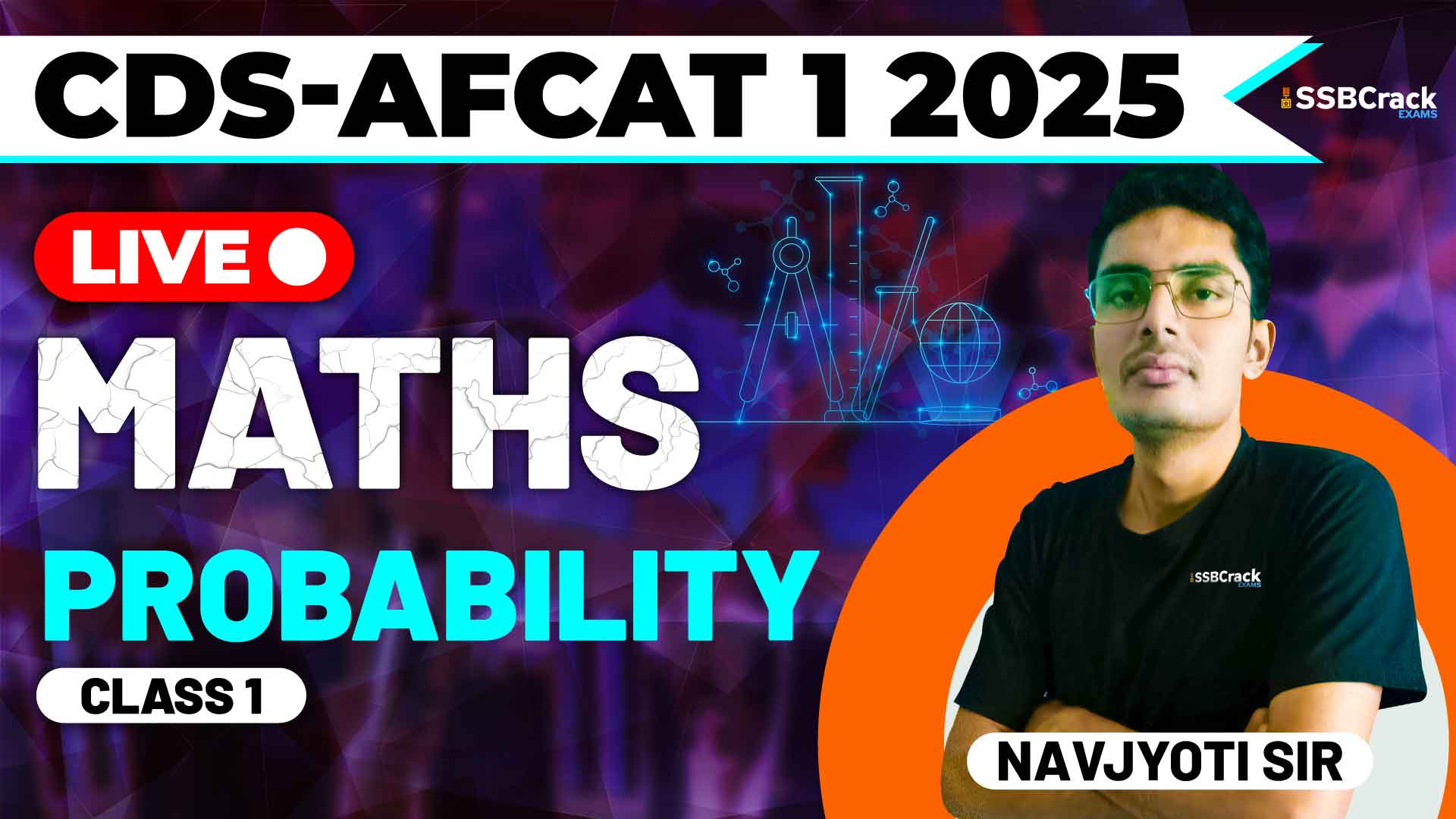Probability is a significant part of the Mathematics syllabus for both the Combined Defence Services (CDS) Exam and the Air Force Common Admission Test (AFCAT). A recent class focused on the topic of Probability, covering key concepts like random experiments, events, sample space, and typical problems involving coins, dice, and cards. These topics are not only important for competitive exams but are also critical for understanding a variety of real-world situations.
In this blog, we will explore the key concepts discussed during the class and provide strategies to prepare for Probability-based questions in the CDS and AFCAT exams.
Key Concepts in Probability
1. Random Experiment
A random experiment is an action or process that leads to one of several possible outcomes, where the result is uncertain. The outcomes of such experiments cannot be predicted with certainty beforehand. For instance, tossing a coin or rolling a die are common examples of random experiments.
Key features of a random experiment:
- It is repeatable under identical conditions.
- The result of each trial is unpredictable.
2. Event and Sample Space
An event is any subset of the sample space. A sample space is the set of all possible outcomes of a random experiment. For example, if a die is rolled, the sample space consists of all possible outcomes (1, 2, 3, 4, 5, and 6). An event could be getting an odd number, where the possible outcomes would be {1, 3, 5}.
Understanding the concepts of events and sample space is fundamental to solving probability problems, as most questions will involve calculating the likelihood of an event occurring from the sample space.
3. Definition of Probability
Probability is the measure of the likelihood that an event will occur. It is based on the ratio of the number of favorable outcomes to the total number of possible outcomes. While the mathematical formula for calculating probability is simple, the application of the concept can be tricky when solving complex problems.
The probability of an event happening is always between 0 and 1, where 0 means the event is impossible, and 1 means the event is certain.
4. Coins, Dice, and Cards Problems
A significant portion of probability questions in the CDS and AFCAT exams involve problems with coins, dice, or cards. These are classic examples of random experiments, where the sample space and possible outcomes are easy to understand but can lead to a variety of complex scenarios.
Coin Tossing Problems: When tossing a coin, the outcomes are heads or tails. For multiple tosses, the sample space increases exponentially. For instance, if two coins are tossed, the sample space is {HH, HT, TH, TT}.
Dice Rolling Problems: For a single die, the possible outcomes are the numbers 1 through 6. For two dice, the sample space expands to all possible pairs of numbers. Dice problems often involve scenarios like getting a particular sum or product.
Card Problems: A deck of 52 cards includes 13 cards each from four suits (hearts, diamonds, clubs, and spades). Problems typically involve calculating the probability of drawing specific cards (e.g., getting a king, a red card, or a face card) from the deck.
Strategies for Preparing Probability Questions
Given that probability can appear tricky, here are some effective strategies to prepare for questions in the CDS and AFCAT exams:
1. Master the Basics
Start by thoroughly understanding the foundational concepts like random experiments, events, and sample space. Being clear on these terms will make it easier to tackle more advanced problems. Begin by solving simple problems involving one coin, one die, or a single draw from a deck of cards before moving on to more complex scenarios.
2. Practice Problems with Coins, Dice, and Cards
Since questions involving coins, dice, and cards are very common in competitive exams, it’s crucial to practice a wide range of these problems. Start with basic problems, such as calculating the probability of getting heads when tossing a coin, and then progress to multi-step problems, such as calculating the probability of drawing a specific sequence of cards.
3. Break Down the Problem
For complex problems involving multiple events, break the question into smaller parts. For example, if you’re asked to calculate the probability of getting a particular sum when rolling two dice, consider all possible outcomes for each die and then identify the ones that match the condition. Breaking down the problem helps in organizing the information and reduces the chances of error.
4. Use Visual Aids
Creating tables or diagrams to visualize outcomes can be extremely helpful. For example, when solving dice problems, you can make a table of all possible outcomes and identify which ones meet the given criteria. Similarly, a probability tree can help in multi-step problems involving coins or cards.
5. Memorize Key Information
For card problems, knowing the structure of a deck is critical. You should be able to recall, without hesitation, that a deck has 52 cards, 13 cards in each suit, 12 face cards, 4 aces, and so on. Memorizing this information will save time during the exam.
6. Solve Previous Year Papers
One of the best ways to prepare for probability questions is by solving previous year papers for CDS and AFCAT. This gives you a good understanding of the types of problems that are asked and the level of difficulty. It also helps in familiarizing yourself with the exam pattern, improving speed and accuracy.
7. Focus on Time Management
While practicing probability questions, ensure that you keep track of time. Probability questions can sometimes be time-consuming due to the multiple steps involved, so practicing under timed conditions will help you solve questions more efficiently during the actual exam.
8. Understand Common Pitfalls
Many students make mistakes by misunderstanding the problem or failing to account for all possible outcomes. In coin problems, for example, students might forget that tossing multiple coins increases the number of outcomes exponentially. Similarly, in card problems, it’s important to pay attention to whether the draw is with or without replacement.
Conclusion
Probability is a topic that requires a good mix of conceptual understanding and practical problem-solving skills. The recent class on Probability focused on mastering the key concepts of random experiments, sample space, events, and solving problems related to coins, dice, and cards. These are critical areas in both the CDS and AFCAT exams.
To excel in probability questions, it’s essential to practice regularly, familiarize yourself with various types of problems, and develop a systematic approach to solving them. Break down complex problems, use visual aids like tables and trees, and focus on improving both speed and accuracy.
With consistent practice and a clear understanding of the underlying concepts, you will be well-prepared to tackle any probability question that comes your way in the CDS and AFCAT exams.



















